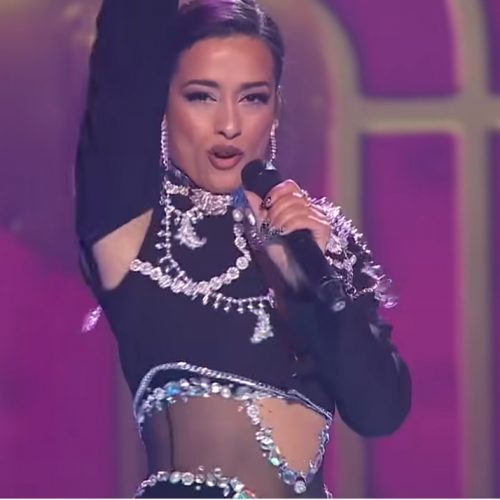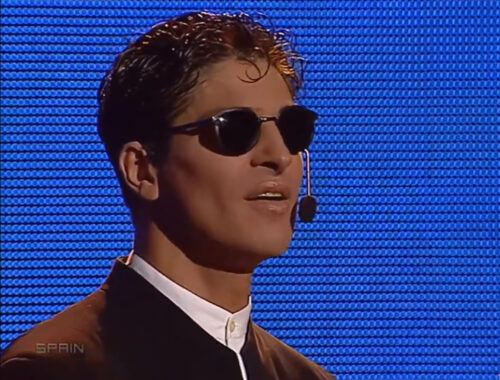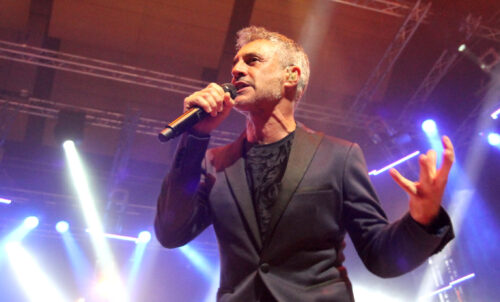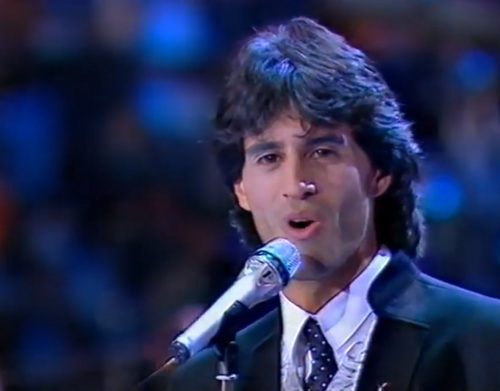We know a lot about Eurovision and we want to share this knowledge with you! Therefore we’d like to bring you a blast from the past. Today: Sergio Dalma, who represented Spain in 1991.
Spain in the Eurovision Song Contest
Spain has been a participant since its debut in 1961. The country has won the competition twice. The country’s first victory came in 1968 with the song “La, la, la” sung by Massiel. The second win was in 1969 with the song “Vivo cantando” performed by Salomé. Interestingly, 1969 was a unique year because four countries (Spain, the UK, the Netherlands, and France) tied for the first place, and there was no rule in place to break the tie, so all four were declared winners.
Over the years, Spain’s results have been mixed. While the country has had some top 10 finishes since its last win, there have also been many years when Spain finished in the lower half of the leaderboard. One of the greatest successes has been “Eres tu”, a worldwide hit by the group Mocedades in 1973. Six years later Spain was close to a victory with Betty Missiego‘s “Su canción”. In recent years, Spain did very well in 2022, when Chanel‘s “SloMo” reached a 3rd place.

National selection
While currently the show Benidorm Fest is the national final for the Eurovision Song Contest, in 1991 Spanish television had an internal selection. TVE chose “Bailar pegados” out of a number of songs. However, almost every year they failed to keep all the titles secret. According to the blog Pasaporte A Eurovision, at least two more songs were in the race: Yossek submitted a song titled “Almas perdidas” and the 1992 participant Serafin Subiri submitted “Polvo de estrellas“.

Sergio Dalma
Josep Sergi Capdevila Querol, professionally known as Sergio Dalma, was born on 28 September 1964 and is a top-selling Spanish artist. With nine chart-topping albums in Spain, he dominated Spain’s official Productores de Música de España national album chart, especially from 2008 to 2013.
Dalma’s journey began when he secured a contract after winning the TV program “Gent d’aqui.” In 1989, his debut album “Esa Chica es Mía” went Platinum, popularizing him in Ibero-America. In 1991, representing Spain in the Eurovision Song Contest with “Bailar pegados,” he achieved fourth place and considerable fame in the U.S. and Ibero-America.
Throughout his career, Dalma produced numerous hit singles and albums, like “Adivina” and “Via Dalma.” By 2013, Dalma’s “Cadore 33” became his fifth consecutive top album in Spain. He celebrated his 25-year career with a 2014 concert in Madrid, later releasing a CD/DVD of the event.
Dalma’s albums, such as “Dalma [es]” in 2015 and “Via Dalma III” in 2017, continued to chart high. By 2019, after parting with Warner Music Group, he joined Sony Music’s Spanish division. Dalma, primarily performing in Spanish, has also sung in Catalan, Italian, English, and French.

Photo: Ruben Ortega
Bailar Pegados
“Bailar Pegados” is best known internationally as the song that represented Spain in the Eurovision Song Contest 1991 held in Rome. Sergio Dalma performed the song and managed to achieve a commendable fourth place in the contest. The song was written by Julio Seijas and Luis Gómez Escolar. Seijas and Escolar are both well-known figures in the Spanish music industry, having written for several prominent artists.
The lyrics of “Bailar Pegados” use the act of dancing closely (“pegados” means “close together” or “attached” in Spanish) as a metaphor for intimacy and the unique closeness between two people in love. The song speaks of the fear of dancing closely, akin to the vulnerabilities and fears in love, but also emphasizes the beauty and singularity of such a connection.


